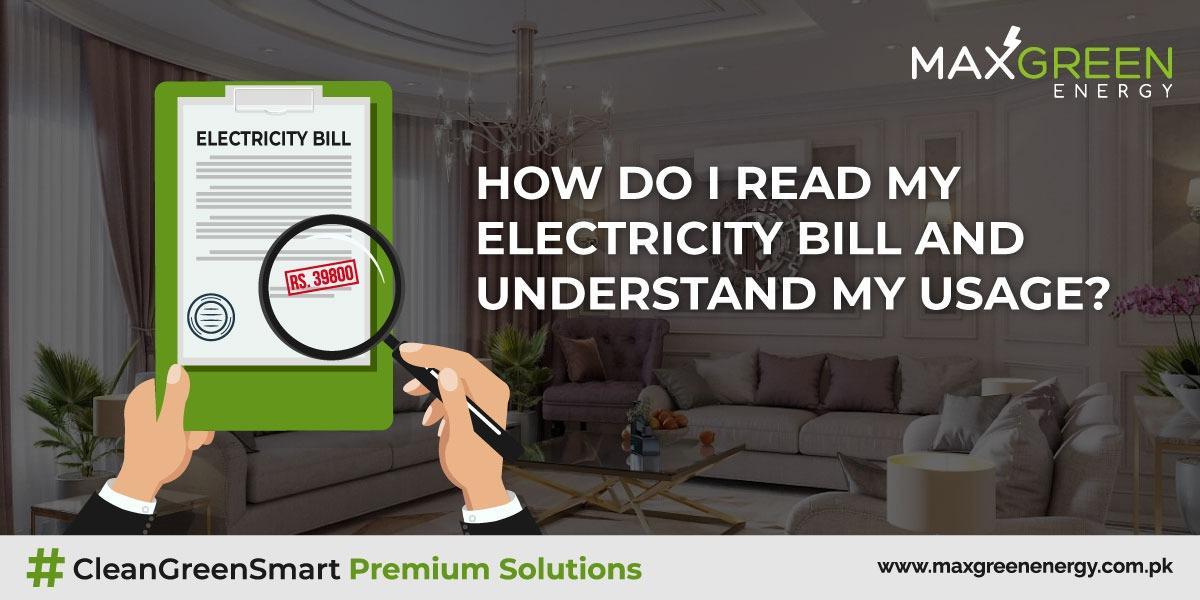To get a better idea of your electricity usage you should start by reading your power bill carefully. Even though the bill format can vary depending on your provider, the important information will be included. There are different electricity providers in Pakistan, and your power bill format may change slightly depending on the provider. However, the most important information will always be included, and you can get a better idea of your electricity usage by reading your power bill carefully.
The electricity provider can be contacted for questions about your power bill, to receive payment assistance, or to ask about other electricity tariffs available.
Understanding the amount charged
Homes in Pakistan normally get a monthly electricity bill. The amount owed will be shown in a very clear format, which can be larger numbers with a different background colour (the exact format will vary by provider). The amount owed includes the GST, and this is stated directly in the electricity bill. The due date will also be provided, along with any available discounts for early payment.
However, the amount owed does not show how your electricity consumption and charges are broken down. This information is also included in the electricity bill.
The power bill will normally include the amount charged on the last bill, and any payments made during the current billing period. If there are any unpaid balances, they will be charged in the current power bill. Contrary to popular belief, this is not a dual charge – the amount owed from the last bill has been simply added to the current bill with the late payment surcharge. The power bill will also tell if the power meter reading was an estimated or actual reading. Estimated readings are used when the power meter is not accessible due to any reasons
.
How electricity consumption is calculated
Power bills also provide a detailed calculation of your consumption, a comparison with your own consumption in previous billing periods (last year’s comparison). You can determine if your consumption has been increasing or decreasing over time, and also if your home uses more or less electricity than the previous month/year.
Your power bill will include the following information about your electricity consumption:
- Current kilowatt-hour reading. If you are charged time-of-use (TOU) tariffs, this will be broken down by consumption schedules – peak hours and off-peak hours.
- Total kWh consumption for the billing period, which is calculated by subtracting the previous reading from the current reading.
- The billing period will also be specified in your power bill, with starting and ending dates, and the exact number of days billed. Although the billing period is monthly, it will not always have exactly 30 days. For example, you may receive a 28-day bill, and then a 32-day bill. The power bill will also provide the scheduled date range for the next reading.
After calculating the kilowatt-hour consumption, the power bill will apply the corresponding electricity tariff. There is also a daily supply charge, which is multiplied by the number of days in the billing period.
Your total power bill is the sum of the electricity charge (based on kWh consumption) and the supply charge (based on the billing period days).
If you have solar panels, the power bill will also indicate the kilowatt-hours exported to the grid during the billing period. The corresponding feed-in tariff is also provided, and these two values are multiplied to calculate your solar buyback credit. If there are any government concessions and rebates, they will also be indicated in the power bill and subtracted from your payment.
Understanding the charts and graphs
Power bills also provide charts and graphs that have two important functions:
Analysing your electricity consumption over time, typically the last 12 months.
The power bill will include your average kilowatt-hour consumption per day, and how this matches up with your own consumption from one year ago. If you have installed solar panels or energy efficient appliances in the last 12 months, this number will be lower.
The average electricity cost per day is also provided along with the kWh consumption. In the case of TOU tariffs, this is also broken down by schedule (peak, off-peak).
For help reading your power bill or for more information, contact us today!
Interested in Solar?
Find out if you’re eligible for solar and how much you could save by switching today. Use our solar calculator to calculate your total average usage and the solar system wattage that fits your consumption need.

